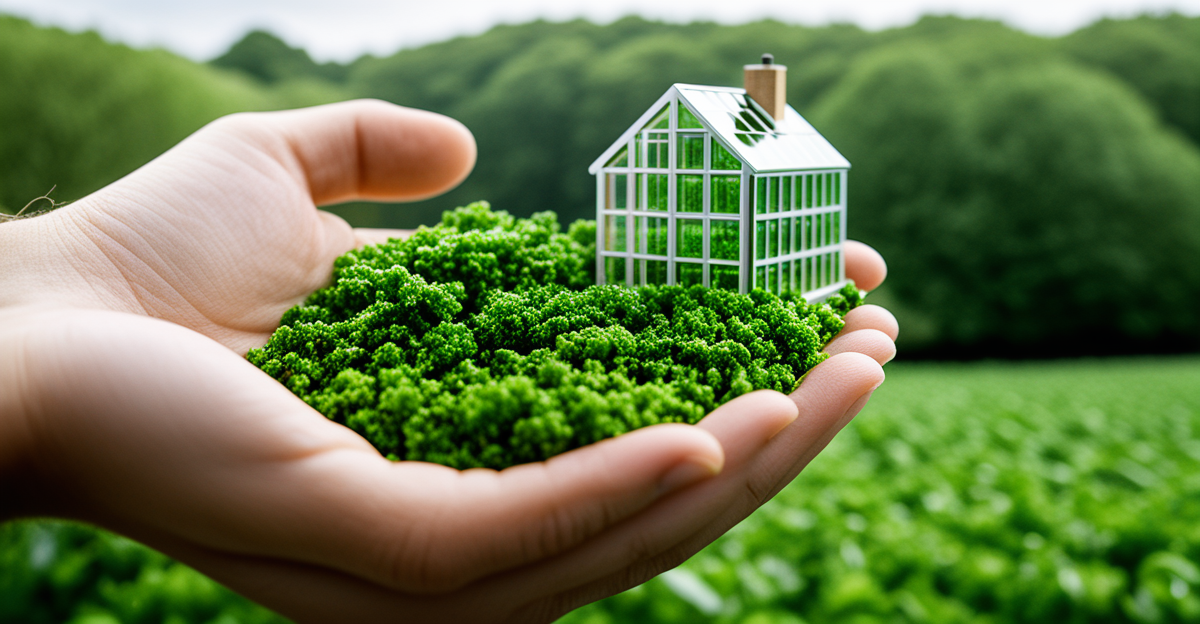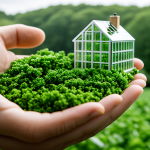Overview of Green Finance in the UK Real Estate Sector
Green finance is the backbone of today’s evolving UK real estate market, intertwining environmental objectives with financial growth. Essentially, green finance involves directing capital flows towards sustainable projects, ensuring that investments are both environmentally and financially beneficial. This approach aligns real estate ventures with ecological sustainability by integrating renewal energy sources, efficient resource use, and reduced carbon footprints into their growth models.
In the UK, the drive toward sustainability has redefined the real estate landscape. Properties are now being designed and developed with sustainability at their core, influenced by principles of green finance. Current trends highlight a significant shift in investor preferences towards green financial mechanisms, prompted by increasing environmental regulations and changing consumer demands. The UK’s real estate market is actively embracing these trends, positioning itself as a leader in marrying financial performance with ecological responsibility.
Also to read : Why Are UK Real Estate Investment Trends Shifting Now?
The importance of sustainability to real estate investments cannot be overstated. It not only helps in maximizing returns through operational efficiency and lower utility costs but also enhances the longevity and market appeal of properties. Moreover, green finance strategies create value for developers, investors, and tenants alike, fostering a sector that can meet future demands more effectively while safeguarding environmental resources. As the sector evolves, the emphasis on sustainability will continue to fuel additional innovation and opportunity across the UK real estate landscape.
Key Mechanisms of Green Finance
In the emerging landscape of green finance, several mechanisms have become instrumental in the UK real estate market. These financial options support the integration of sustainable practices, paving the way for a more eco-friendly sector.
Have you seen this : How Does the UK’s Economic Climate Influence the Real Estate Market?
Green Bonds
Green bonds are a vibrant component of green finance, designed to fund projects with positive environmental outcomes. These bonds function by providing fixed-income securities to investors, with the funds exclusively allocated to sustainable real estate developments. For example, the proceeds from green bonds might support the construction of eco-friendly buildings or finance upgrades to enhance energy efficiency. The impact of green bonds on real estate is profound; they not only facilitate access to capital for environmentally-conscious projects but also strengthen investor confidence in sustainable practices.
Sustainability-linked Loans
Sustainability-linked loans offer another innovative financing option, where the loan terms are inherently tied to the borrower’s environmental performance. These loans provide financial incentives for achieving specific sustainability targets, such as reducing carbon emissions or improving a building’s energy rating. By incorporating economic benefits tied directly to sustainability commitments, these loans encourage developers to prioritize ecological objectives. This alignment of financial and environmental goals is pivotal in driving the UK real estate sector towards greener practices.
Government Grants and Incentives
Recognizing the critical role of green finance in promoting sustainable development, the UK government offers grants and incentives to bolster eco-friendly projects. These can include tax breaks, subsidies, and direct funding, all aimed at reducing the financial burden of implementing green technologies. Such government initiatives not only make environmentally sustainable projects more economically viable but also stimulate market growth by encouraging broader adoption of green practices. These incentives are crucial for developers looking to incorporate sustainability while remaining financially competitive.
Examples of Sustainable Real Estate Projects in the UK
The UK has seen a proliferation of sustainable real estate projects, setting benchmarks for eco-friendly development. These projects are redefining the UK property development landscape by incorporating green building examples that emphasize innovation and environmental responsibility.
Among notable case studies is the transformation of King’s Cross in London. This redevelopment project integrates renewable energy systems and intelligent design to reduce carbon emissions significantly. The project showcases how sustainability can be central to urban regeneration, with green roofs and community gardens enhancing the area’s ecological footprint.
Another striking example is The Edge in Birmingham, a blueprint for smart buildings in the UK. Using cutting-edge innovative technologies, such as photovoltaic panels and rainwater harvesting systems, The Edge demonstrates how commercial structures can operate efficiently while minimizing environmental impact.
These projects do more than just improve aesthetics; they stimulate local economies by creating jobs and attracting businesses keen on sustainability. They illustrate the tangible benefits of investing in green infrastructure, from fostering community well-being to enhancing property appeal. The positive impact on local communities and their economies further underscores the potential for sustainable real estate projects to drive transformative change.
Statistics and Trends in Green Investment
In the burgeoning area of green investment trends, motivation for embracing sustainability is well-founded within the UK real estate market. Recent statistics reveal a compelling shift; green investments are gaining ground over traditional counterparts, largely propelled by both governmental backing and broader public demand. By leveraging these opportunities, investors are actively pursuing projects that prioritize ecological responsibility.
One striking trend indicates that investments in sustainable real estate have grown significantly in the past five years, showcasing a market increasingly aligned with sustainability goals. This shift correlates with a rise in sustainable developments targeting low-carbon footprints and energy efficiency. The market analysis presents an encouraging outlook: green investments are no longer a niche but a pivotal element in the decision-making processes of many investors.
Moreover, data suggests a growing preference among investors for portfolios rich in eco-friendly assets. These preferences are not only driven by regulatory pressure but also by the superior return on investments (ROIs) attributed to operational savings and enhanced property appeal that sustainable buildings provide. Compared to traditional assets, properties developed with green finance principles tend to hold enduring value and attract higher premiums, reflecting a matured understanding of the long-term benefits involved. This trend underscores a distinct pivot towards sustainability, shaping the future trajectory of real estate investments in the UK.
Government Policies and Regulatory Framework
The role of government policies and regulations in the UK real estate sector cannot be overstated, especially in advancing green finance initiatives. These frameworks set essential green building standards, guiding the sector toward sustainability.
Energy Efficiency Regulations
Energy efficiency regulations form a critical part of the UK’s strategy to reduce the carbon footprint of its real estate market. These regulations mandate the use of energy-saving technologies and sustainable design practices in new constructions and renovations. By enforcing stricter energy performance standards, the government ensures that buildings consume less energy, thereby contributing to national carbon reduction goals.
Building Standards and Certifications
The adoption of certain building standards and certifications, such as BREEAM (Building Research Establishment Environmental Assessment Method), is pivotal for validating the sustainability of properties. These certifications assess various aspects, including energy and water use, materials, waste management, and indoor environment quality. Achieving such certifications enhances a building’s value, appeal, and marketability, proving that the structure meets rigorous environmental criteria.
Future Policy Directions
Looking ahead, future policy directions are likely to further shape the landscape of green finance and sustainable real estate. Potential policy changes may include more comprehensive measures to support renewable energy integration and stricter standards for sustainable urban development. These future regulations could significantly impact the real estate market by promoting eco-friendly building practices and encouraging sustainable investments. Such policies are crucial for fostering an environment of growth and innovation within the UK real estate sector, driving continued alignment with sustainability objectives.
Implications of Green Finance on Property Valuation and Investment Strategies
Green finance is increasingly shaping the landscape of property valuation and investment strategies in the UK real estate sector. This evolving influence derives from green finance initiatives emphasizing sustainability and ecological responsibility.
Impact on Property Valuation
The application of green finance significantly affects property valuations. Properties developed or retrofitted using green finance mechanisms often see an uptick in value. This is due to decreased operational costs, improved energy efficiency, and increased market demand for sustainable buildings. Sustainable properties align with broader societal goals on climate action, thus attracting investors focused on long-term value creation.
Shifts in Investment Strategies
There is a noticeable shift in investment strategies toward sustainable real estate. Investors are increasingly prioritizing projects that align with green finance principles, recognizing potential economic and environmental synergies. This shift is driven by both governmental incentives and consumer demand for sustainable development. Investment models now often incorporate evaluations of sustainability metrics, which can enhance ROI through efficiency gains and market attractiveness.
Long-term Benefits of Green Finance
Integrating green finance into investment plans offers considerable long-term benefits, positioning investors to better navigate future market trends. These include enhanced property resilience, superior tenant satisfaction, and alignment with emerging environmental regulations. Furthermore, green finance creates a positive feedback loop: as properties gain value through sustainable practices, they further validate the initial investment rationale, amplifying returns and supporting sustainable growth. By embracing green finance, investors not only contribute to ecological well-being but also bolster their financial performance in an increasingly environmentally-aware marketplace.







